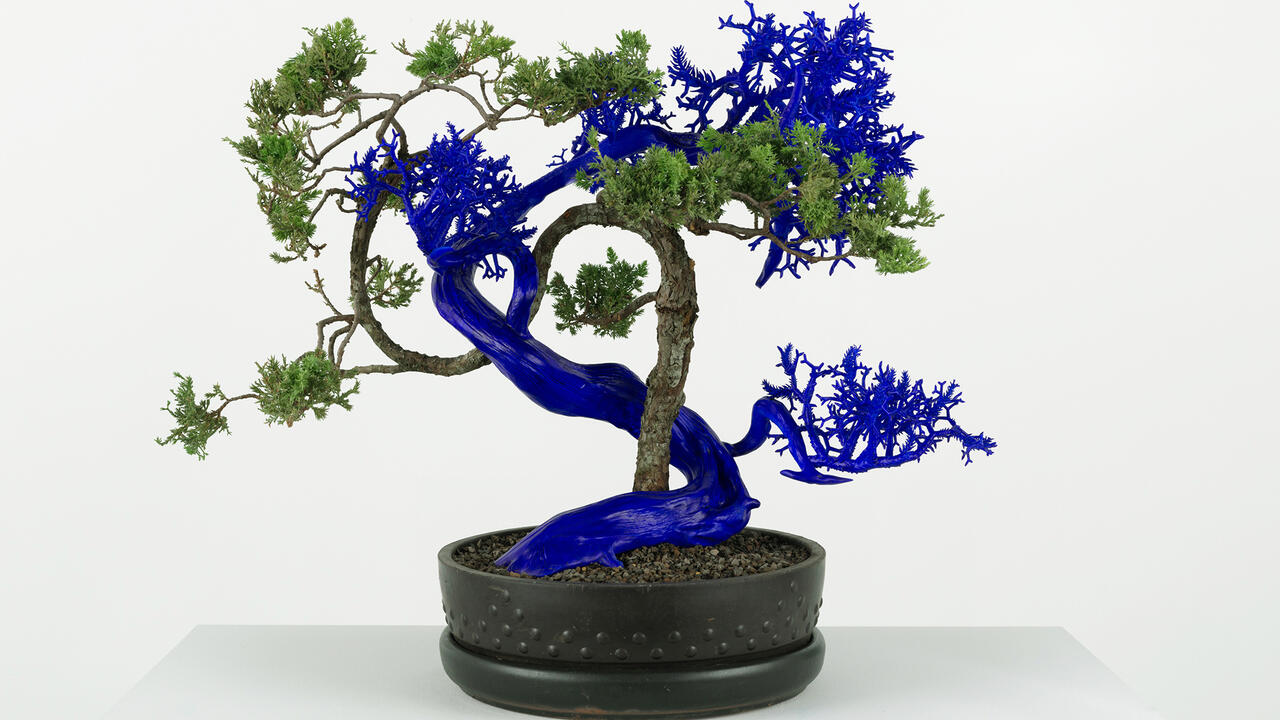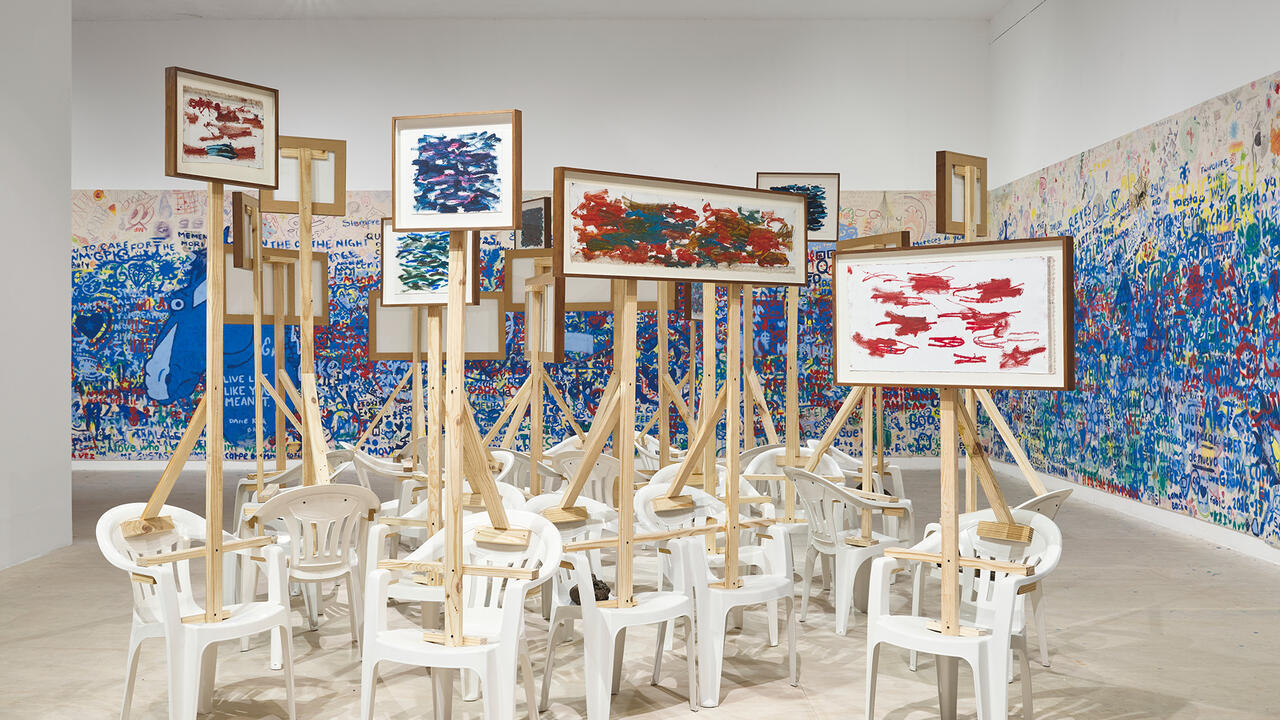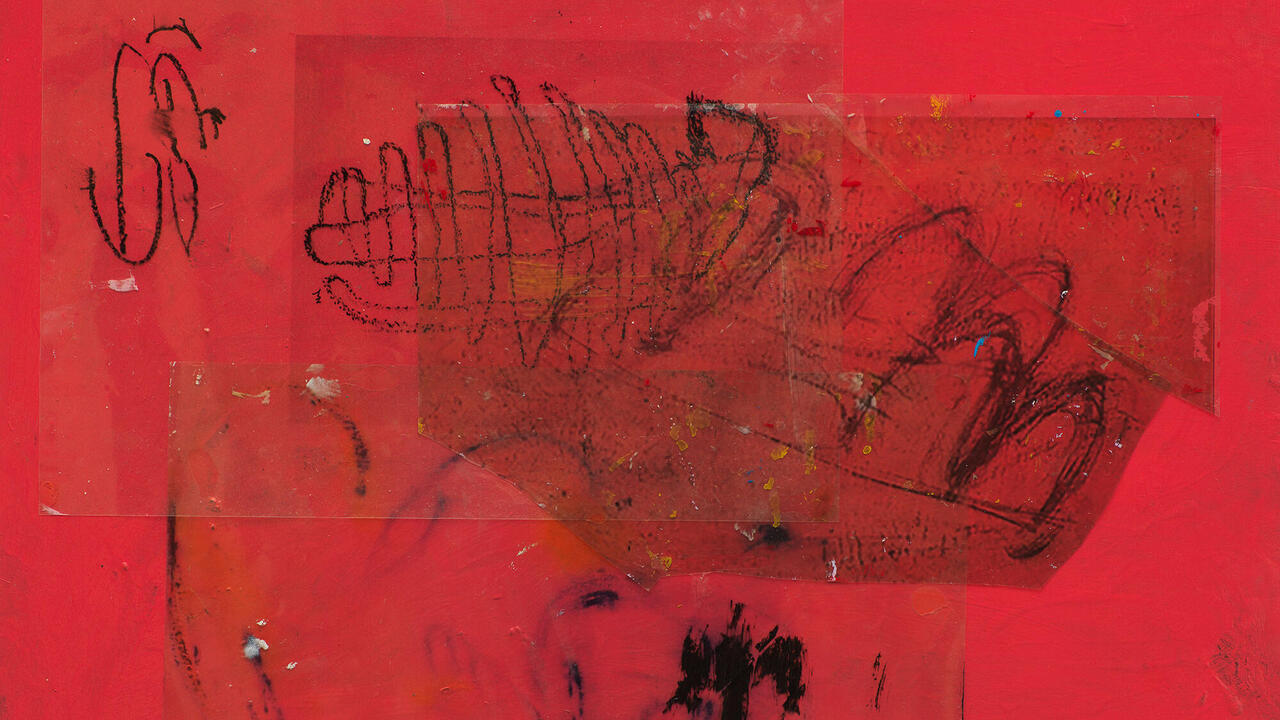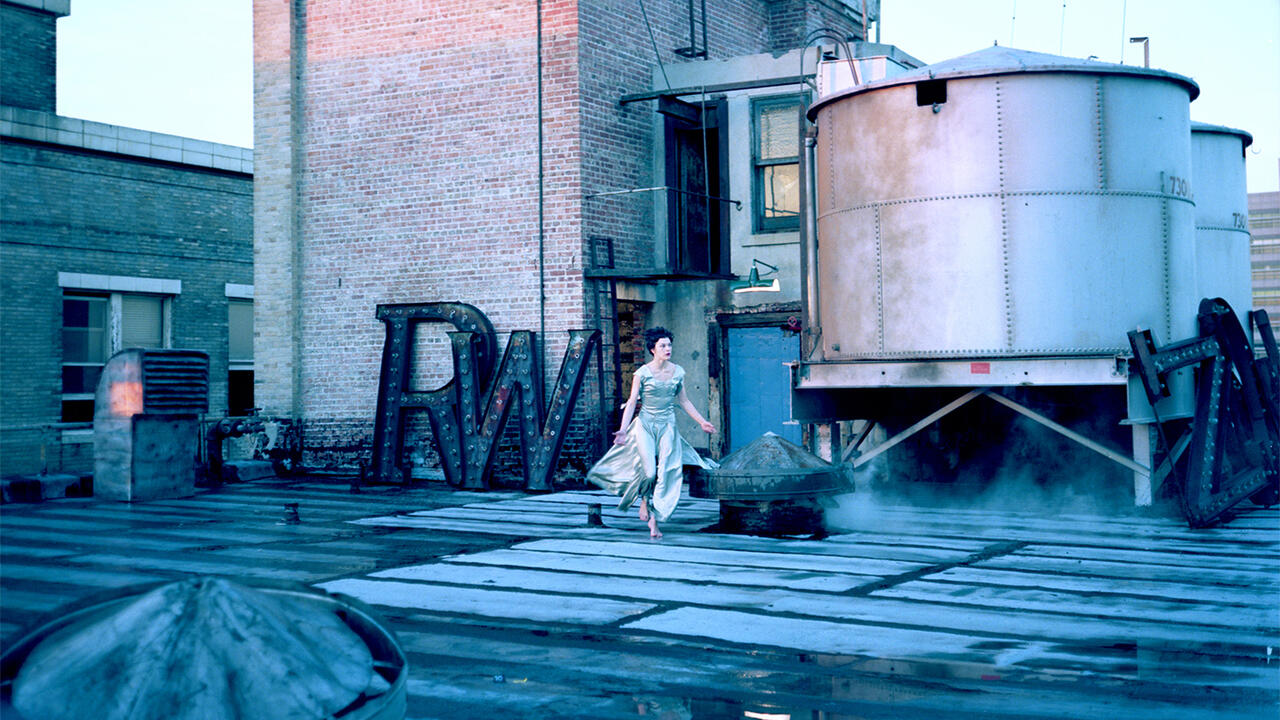Vicky Colombet’s Paintings Transcend Place
At FERNBERGER, Los Angeles, the artist’s abstract compositions suggest an indeterminate, emergent world akin to that of classical Chinese landscapes
At FERNBERGER, Los Angeles, the artist’s abstract compositions suggest an indeterminate, emergent world akin to that of classical Chinese landscapes

Since the renaissance, Western painters of landscapes have built compositions around a fixed point from which everything gains its coherence. In shan shui (mountain-water), a classical Chinese genre of landscape painting developed during the Six Dynasties period (220–589), the world is indeterminate, emergent, in flux. While the landscape painter seeks geometric order, as the philosopher François Jullien writes in The Great Image Has No Form, or On the Nonobject through Painting (2009), the shan shui painter ‘grasps the world beyond its distinctive features and in its essential transition’.
French American artist Vicky Colombet insists that her paintings aren’t landscapes, calling to mind this distinction. In ‘Flying Back Home’, her small yet profound exhibition now on the second leg of a two-part rotation at FERNBERGER in Los Angeles, Colombet paints earth scenes in rippling shades of black and blue. The crystalline azure ridges of Plis et Paysage #1564 (Folds and Landscapes #1564, all works 2024) suggest vast, oceanic currents. The indigo overpainting of Plis et Paysage #1573 summons to my mind the ebb and flow of tidal pools, while the monumental triptych Flying Back Home #1569 reads like a contour map of a cobalt continent – mountains, valleys, plateaux – seen from on high. Simultaneously meditative and unmooring, each abstract composition jostles and churns with breathtaking tectonic force.

‘I would like to give them the feeling that it is nature painting,’ Colombet said in a 2020 interview with Marianne Alphant, published by Musée Marmottan Monet in Paris. ‘The brush produces the wind, the speed; the pigments provide the earth, the rocks.’ Imbued with a lush material symbolism, Colombet’s process is essentially to replicate terrestrial conditions at human scale so that they might impart some significant, residual image. She sands her canvases to soften the linen fibres and weighs down the surfaces with pebbles while she works, developing topographies that naturally collect and reject the paint. She mixes pure pigments in petrol to keep the colours from blending, and she gently guides the paint over the canvas terrain with a fine goat- or squirrel-hair brush. The idea is for the artist to disappear, she told Alphant, to treat oneself as a single ‘element’ within a ‘minor genre’.

In several of the ‘Plis et Paysage’ works, the canvas retains a dominant presence; squarish pictorial continents feather out into voids at the composition’s edges, which further the aura of transience and mutability. Equally informed by her childhood travels through India, Thailand and Japan, as well as her time among Paris’s artists and literati – such as Simone de Beauvoir, with whom she founded a feminist newspaper – the works find harmony between the Impressionists’ lyrical compositions and brush-and-ink traditions: in their rejection of horizon and perspective, they conceive of abstraction not as a function of form but of time.

Dislocated from a specific sense of personhood or place, the paintings’ titles are generic. As the exhibition’s name suggests, Colombet found her inspiration while flying between her homes in Paris and New York. This aerial perspective, and the sense of remove it provides, is essential in shan shui, too. In ink paintings by the Southern Tang dynasty court artist Dong Yuan, such as the resplendent Riverbank (c.937–76) at the Metropolitan Museum of Art in New York, an impossible view reveals rivers flowing through mountains that defy fixed perspective, while a haze obscures the distant horizon line, untethering the vision from its worldly context. Individuation is temporary here; so is form. At 10,000 metres in the air, Colombet arrived at the same epiphany – the vantage where it’s possible to apprehend everything in its place is where place itself ceases to exist.
Vicky Colombet, ‘Flying Back Home Part II’, is on view at FERNBERGER, Los Angeles until 21 December; Vicky Colombet, ‘Flying Back Home Part I’, was on view at FERNBERGER, Los Angeles from 7 September to 1 November
Main image: Vicky Colombet, Flying Back Home #1569, 2024, pigments, oil, alkyd on canvas, 2 × 6.1 m each (triptych), in Vicky Colombet, ‘Flying Back Home’, 2024, installation view. Courtesy: the artist and FERNBERGER, Los Angeles






















